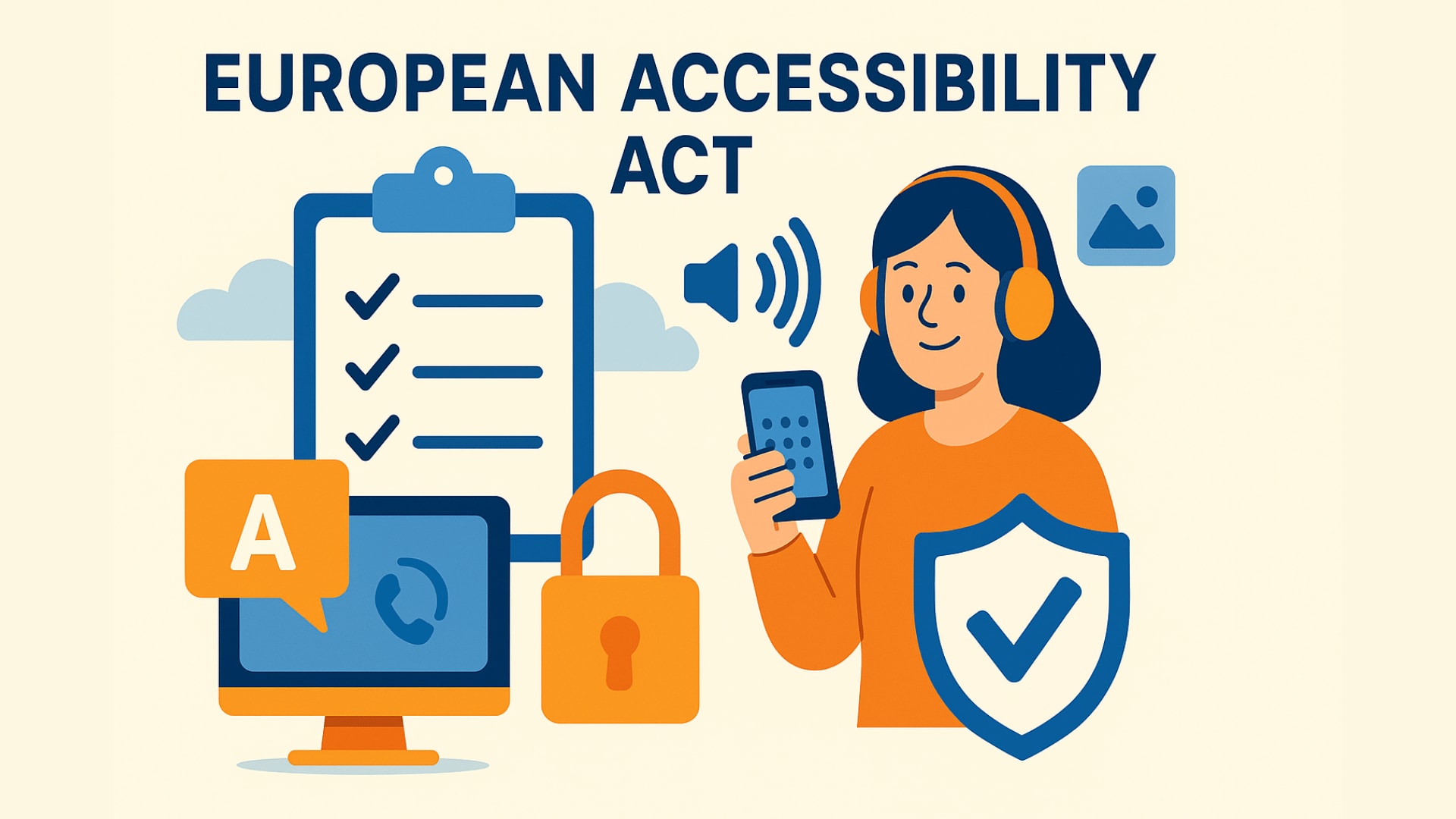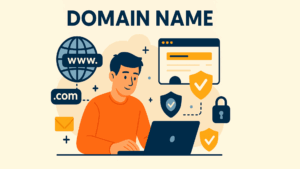
Digital accessibility is more than just a buzzword – it’s now a legal requirement for European businesses. At the core of this movement is the European Accessibility Act (EAA), which mandates that products and services sold in the EU be accessible to people with disabilities. But what does this mean for website operators, IT managers and business leaders?
This guide breaks down everything you need to know about the EAA, its development, implications and how businesses can comply with it while enhancing their digital offerings.
Table of contents
- Understanding the European Accessibility Act
- National Implementation of EAA: Germany and Austria
- What Products and Services are Affected?
- Exceptions and Disproportionate Burden
- The Principles of Accessibility
- Timeline for Implementation of EAA
- The Benefits of Accessibility
- The Risks of Non-Compliance
- How Can Certified CAPTCHA Solutions Help?
- Conclusion
- FAQ – Frequently Asked Questions
Understanding the European Accessibility Act
The European Accessibility Act, officially known as Directive (EU) 2019/882, came into effect in June 2019. Its primary goal is to ensure that people with disabilities have the same access to products and services as everyone else. The EAA applies to a wide range of products and services that are deemed essential for daily life, from computer systems and ATMs to smartphones and telecommunication services. It aims to eliminate barriers that have been created by varying accessibility standards across EU member states.
For businesses, the European Accessibility Act offers both a challenge and an opportunity. While the directive requires them to meet new accessibility standards, it also provides a unified framework across the EU, simplifying compliance with accessibility regulations in different countries. This allows businesses to save costs and improve their cross-border operations.
National Implementation of EAA: Germany and Austria
As with all EU regulations, the EAA requires member states to implement the directive into national law. In Germany, this has been done through the Barrierefreiheitsstärkungsgesetz (BFSG) and the second Media Change State Treaty. In Austria, the EAA was incorporated into the Barrierefreiheitsgesetz (BaFG), which was passed in July 2023. The BaFG will be fully effective by June 28, 2025, setting a deadline for businesses to comply with its accessibility requirements.
These national laws follow the European directive while considering local contexts and each country’s specific needs. Businesses must carefully review national regulations to ensure compliance.
What Products and Services are Affected?
The European Accessibility Act covers a broad range of products and services vital for people with disabilities. These include computer hardware, software, ATMs, ticketing machines, smartphones, digital TVs and telecommunication services. For website operators and online shops, the key focus is on ensuring that electronic transactions are accessible to all consumers.
This applies not only to e-commerce platforms and booking systems but also to websites offering digital memberships or subscriptions. In Austria, the BaFG further extends accessibility to online communication services, such as internet and video telephony and online messaging platforms.
Exceptions and Disproportionate Burden
The European Accessibility Act does provide some exceptions. For example, micro-enterprises – defined as companies with fewer than ten employees and a turnover of less than €2 million – are exempt from some of the requirements. However, this exemption does not apply to micro-enterprises involved in manufacturing, importing, or distributing products covered by the Act.
In addition, businesses may claim an exemption if meeting the accessibility requirements would impose a disproportionate burden. This could occur if implementing accessibility features would require significant changes to the product or service that would alter its intended function. Any claims of disproportionate burden must be well documented and retained for five years.
The Principles of Accessibility
Accessibility means ensuring that products and services can be used by people with disabilities, enabling them to interact with content in an intuitive and practical way. The European Accessibility Act is grounded in four key principles to help businesses create accessible digital experiences for all users:
- Perceivable: Information and interfaces should be presented in ways that everyone can perceive, including those with visual or auditory impairments. This includes providing alternative text for non-text content like images and ensuring sufficient contrast between text and background.
- Operable: User interfaces must be operable by all users, including those who rely on keyboards or assistive technologies like screen readers. This means that websites and applications should be navigable without requiring a mouse.
- Understandable: The information and the user interface must be easy to understand. This involves using clear and simple language, consistent layouts and providing clear instructions to guide users through the interface.
- Robust: Content must be compatible with a wide range of devices and assistive technologies, including screen readers and voice recognition software. This is achieved by adhering to web standards and ensuring that digital content is coded properly.
Timeline for Implementation of EAA
Although the European Accessibility Act came into force in 2019, businesses have time to adapt. The BaFG in Austria, for example, will be fully enforced by June 28, 2025. From this date, new products and services must meet the accessibility standards laid out in the Act. Services offered before this date will have a transition period until June 28, 2030, to become accessible.
For self-service kiosks, the deadline for compliance is extended until June 28, 2040, or up to 20 years after their initial installation. This gives businesses time to make necessary updates, but it’s important to start the process early to ensure a smooth transition.
The Benefits of Accessibility
Making products and services accessible is not just a legal obligation; it also offers significant advantages to businesses. A more accessible website or service can help businesses reach a wider audience, including people with disabilities and older adults. An inclusive digital presence improves user experience, creating clearer structures and better navigation for all users, which can lead to higher engagement and conversion rates.
Accessibility also positively impacts SEO. Many accessibility principles, such as well-structured content and clear text alternatives, align with SEO best practices. As a result, accessible websites often perform better in search engine rankings.
Furthermore, businesses that prioritize accessibility demonstrate their commitment to inclusivity and social responsibility. This can enhance brand reputation and foster customer loyalty. By proactively implementing accessible features, businesses gain a competitive edge, positioning themselves as leaders in offering accessible services.
The Risks of Non-Compliance
Failing to comply with the European Accessibility Act can lead to serious consequences. Legal risks include fines, lawsuits and potential damage to a company’s reputation. Businesses that neglect accessibility requirements might face complaints from customers or advocacy groups and the public fallout can harm their brand image. Additionally, non-compliance can lead to a loss of market share as consumers increasingly demand more inclusive digital services.
How Can Certified CAPTCHA Solutions Help?
As digital accessibility becomes increasingly important, businesses must ensure that every element of their websites, including security features like CAPTCHA systems, is accessible. For businesses seeking a solution that balances accessibility and security, our certified solution can help. Captcha.eu is WCAG 2.2 AA compliant and designed with accessibility at its core. Using cryptographic and behavioral verification, we offer a solution that is inclusive, respects user privacy and complies with European regulations.
By implementing an accessible CAPTCHA system, businesses can improve the overall accessibility of their site, ensuring that all users, including those with disabilities, can easily interact with the website. This creates a more inclusive experience for all visitors.
Conclusion
The European Accessibility Act is a significant step in making digital products and services accessible to all. For businesses, ensuring compliance with the EAA is crucial not only for legal compliance but also for expanding their audience and enhancing user experience. Companies that take proactive steps to improve digital accessibility can gain a competitive edge, strengthen their reputation and mitigate legal risks.
As the compliance deadline draws closer, businesses should assess their digital products and services, ensuring they meet accessibility standards while also prioritizing security. One crucial area where businesses can make notable improvements is by selecting the right CAPTCHA system. A WCAG 2.2 AA compliant CAPTCHA solution, like Captcha.eu, is an ideal choice for businesses looking to meet both accessibility and security requirements, all while respecting user privacy.
FAQ – Frequently Asked Questions
What is the European Accessibility Act (EAA)?
The European Accessibility Act (EAA) is a legal framework introduced by the European Union to make digital and physical products and services more accessible to people with disabilities. The EAA aims to eliminate barriers in the internal market by setting common accessibility standards across member states.
When did the European Accessibility Act come into effect?
The European Accessibility Act was adopted on June 28, 2019. However, its full implementation, including national adaptations, is gradually taking effect. In Austria, for example, the Barrierefreiheitsgesetz (BaFG) will be fully enforceable by June 28, 2025.
What products and services are affected by the EAA?
The EAA covers a wide range of products and services, including computer systems, smartphones, ATMs, telecommunication services, ticketing systems, and self-service kiosks. For website operators, the EAA applies to digital services that involve consumer transactions, such as e-commerce platforms, online booking systems, and digital memberships.
Who needs to comply with the European Accessibility Act?
Any business that offers products or services within the EU, including websites, apps, and digital platforms, must comply with the EAA if they are engaging with consumers. This includes both large corporations and small businesses, though micro-enterprises (with fewer than 10 employees and under €2 million in revenue) may be exempt.
What are the penalties for non-compliance with the EAA?
Failure to comply with the European Accessibility Act can result in legal penalties, including fines, lawsuits, and reputational damage. Businesses that do not meet the accessibility standards risk losing customers, particularly those with disabilities, and may face public scrutiny for their failure to create an inclusive environment.
How can businesses ensure compliance with the EAA?
Businesses can ensure compliance by assessing their digital services and products to meet accessibility standards. This includes ensuring that websites and apps are accessible to people with disabilities, using assistive technologies, and implementing best practices outlined in accessibility guidelines like WCAG 2.2. Additionally, using certified and accessible CAPTCHA solutions, like the WCAG 2.2 AA compliant captcha.eu, can help businesses comply with the EAA.
100 free requests
You have the opportunity to test and try our product with 100 free requests.
If you have any questions
Contact us
Our support team is available to assist you.




